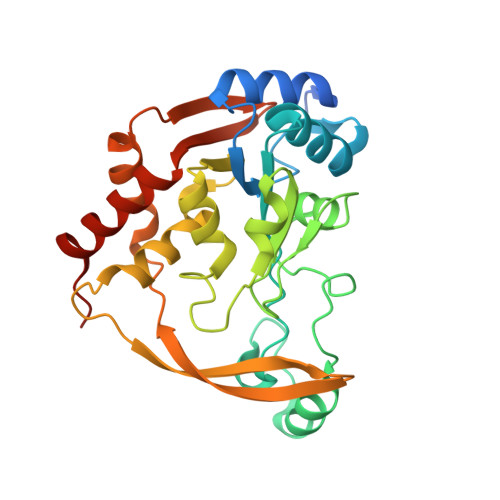New N-Acetyltransferase Fold in the Structure and Mechanism of the Phosphonate Biosynthetic Enzyme FrbF.
Bae, B., Cobb, R.E., Desieno, M.A., Zhao, H., Nair, S.K.(2011) J Biological Chem 286: 36132-36141
- PubMed: 21865168
- DOI: https://doi.org/10.1074/jbc.M111.263533
- Primary Citation of Related Structures:
3SMA - PubMed Abstract:
The enzyme FrbF from Streptomyces rubellomurinus has attracted significant attention due to its role in the biosynthesis of the antimalarial phosphonate FR-900098. The enzyme catalyzes acetyl transfer onto the hydroxamate of the FR-900098 precursors cytidine 5'-monophosphate-3-aminopropylphosphonate and cytidine 5'-monophosphate-N-hydroxy-3-aminopropylphosphonate. Despite the established function as a bona fide N-acetyltransferase, FrbF shows no sequence similarity to any member of the GCN5-like N-acetyltransferase (GNAT) superfamily. Here, we present the 2.0 Å resolution crystal structure of FrbF in complex with acetyl-CoA, which demonstrates a unique architecture that is distinct from those of canonical GNAT-like acetyltransferases. We also utilized the co-crystal structure to guide structure-function studies that identified the roles of putative active site residues in the acetyltransferase mechanism. The combined biochemical and structural analyses of FrbF provide insights into this previously uncharacterized family of N-acetyltransferases and also provide a molecular framework toward the production of novel N-acyl derivatives of FR-900098.
- Department of Biochemistry, University of Illinois at Urbana-Champaign, Urbana, Illinois 61801.
Organizational Affiliation:

















